Shoe Review | Hoka Clifton Edge: Good for Roads AND Trails
by Chase Parnell — August 19, 2020
Some trail running shoe elitists are going to get upset about this claim but in my opinion, unless you run on technical, steep, or really muddy trails on a daily basis, I don’t think most people need trail shoes. Most trails shoes, in my opinion, are essentially heavier road shoes with a lot of marketing features. Most of the benefits (i.e. lugs, tread patterns, rock plates, tough upper fabrics, etc.) are so marginal that the sacrifice in weight should cause you to consider if the trade-offs are actually worth it.
Don’t get me wrong, I’ve done a ton of running in trail shoes but it was mostly because of the fit/comfort as opposed to any of the selling features that made it a “trail shoe” instead of a “road shoe”. What I’m saying is that if you have a road shoe or you find one that you love, don’t worry so much about what type of shoe it is officially classified as. I cannot tell you how many trail and mountain miles I’ve run in the classic Saucony Kinvara road shoe.
Now sure, if you’re going to be scrambling ridgelines, rock-hopping technical terrain or bombing down scree fields, a trail shoe is ideal because the science behind the shoe features actually comes into play. I’d say for 95% of the trails I’ve ran in my life, a road shoe would have been just fine. For the other 5%, a good trail shoe is recommended to keep you vertical.
Lately I’ve been running in the Clifton Edge, a road shoe, on my shorter flatter trail runs as well as on the days I do strides. After 200+ miles in the shoe, here’s my take:
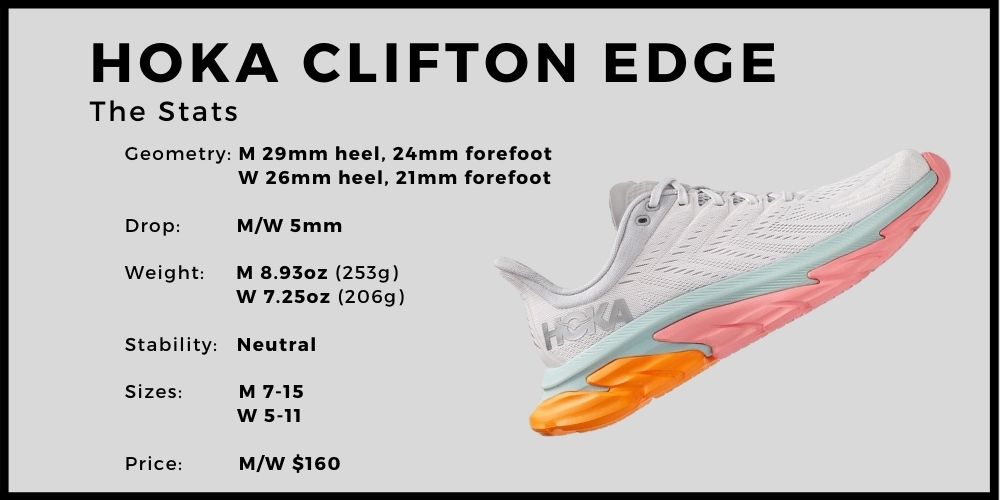
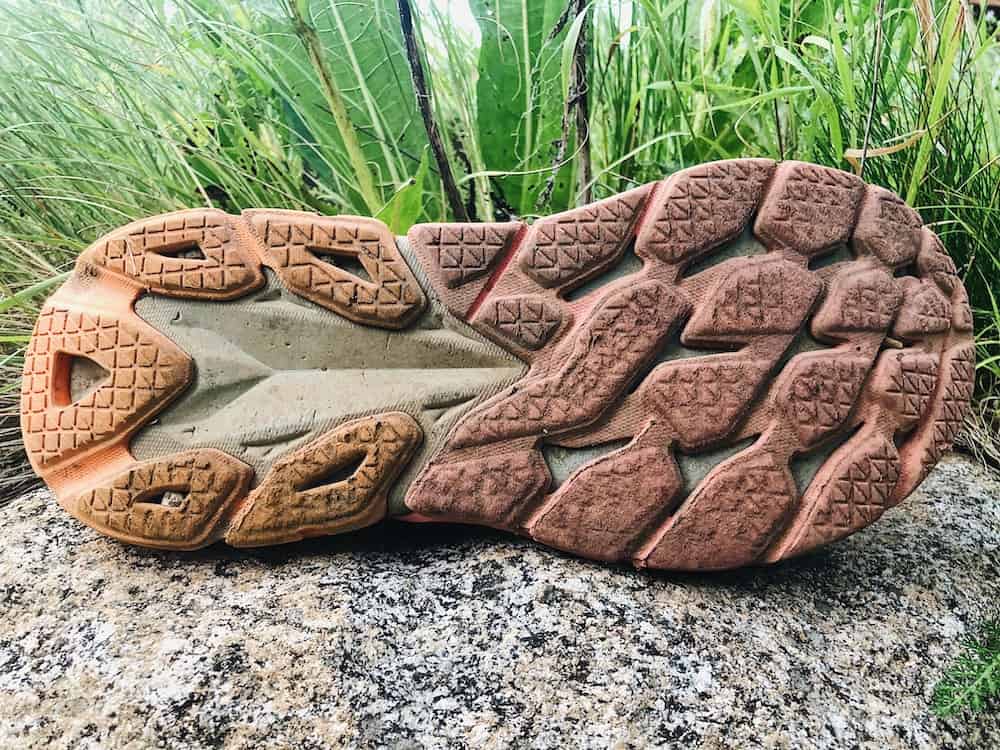
Hoka Clifton Edge Outsole
The Edge has a prominently wide platform for superior stability. With that stability comes a touch of rigidity, a faint sensation of the shoe is clapping the ground through the foot strike. The outsole is surprisingly grippy on most surfaces, which might be due the greater surface area in contact to the ground or the rubber layerings; likely a combination of the two. Most of my runs in the Edge have been on dry trail of easy to moderate grade. I can really bomb down singletrack with confidence and haven’t felt any undue slipping or discomfort. If the trail is very steep, I might have a tendency to apply the breaks more than I would in my go to trail shoe, the Hoka Torrent 2.
One of the unique features of the Edge is the extended heel. It actually protrudes out behind your foot, lengthening the shoe. On the rare occasion that I hit a road section, I can notice a certain propulsive effect and nice roll through the entire foot strike due to the the larger platform. Note: If you’re a forefoot striker running on flat terrain, then the extended heel is pretty pointless.
Lastly, as you can see in the photo, there are a few spaces in the outsole where small rocks can lodge but it’s never bothered me at all and I don’t ever both plucking them out.
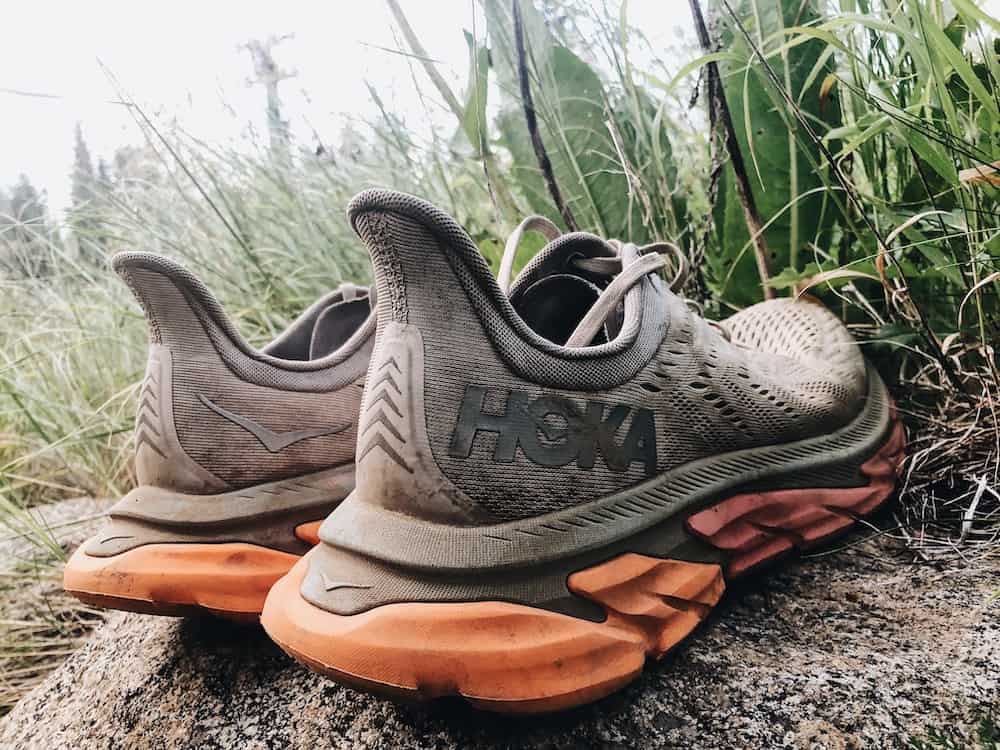
Hoka Clifton Edge Midsole
If you like cushioning and a soft feel under the forefoot, you’ll love this shoe. In my opinion, Hoka makes the best cushioning in the business. I think Nike has the best out of box feel, but over the life of the shoe, Hoka holds up and retains its soft feel far longer.
After over 200 miles in this shoe, the cushioning has compressed, but it is still very comfortable. Hoka claims that this shoe is made with its, “…softest, lightest foam yet…” so by implication there must have been further innovations achieved in the lab. What they accomplish on the weight side of things is truly incredible. Hoka is somehow able to create comparatively large stable shoes while still maintaining that light as a feather feel. How these foams are as durable and yet as soft as they are is truly an engineering marvel.
To run a quick weight comparison, the men’s Edge comes in at 8.93oz. Here are a smattering of shoes that, despite a normal sized platform, still weigh more than the Clifton Edge:
- Nike Pegasus 37 — 10.5oz
- Hoka Torrent 2 — 9.3oz
- Saucony Triumph 18 — 12.2oz
- Brooks Glycerine 18 — 10.2oz
- Altra Lone Peak 4.5 — 10.5oz
- Asics Novablast — 9.2oz
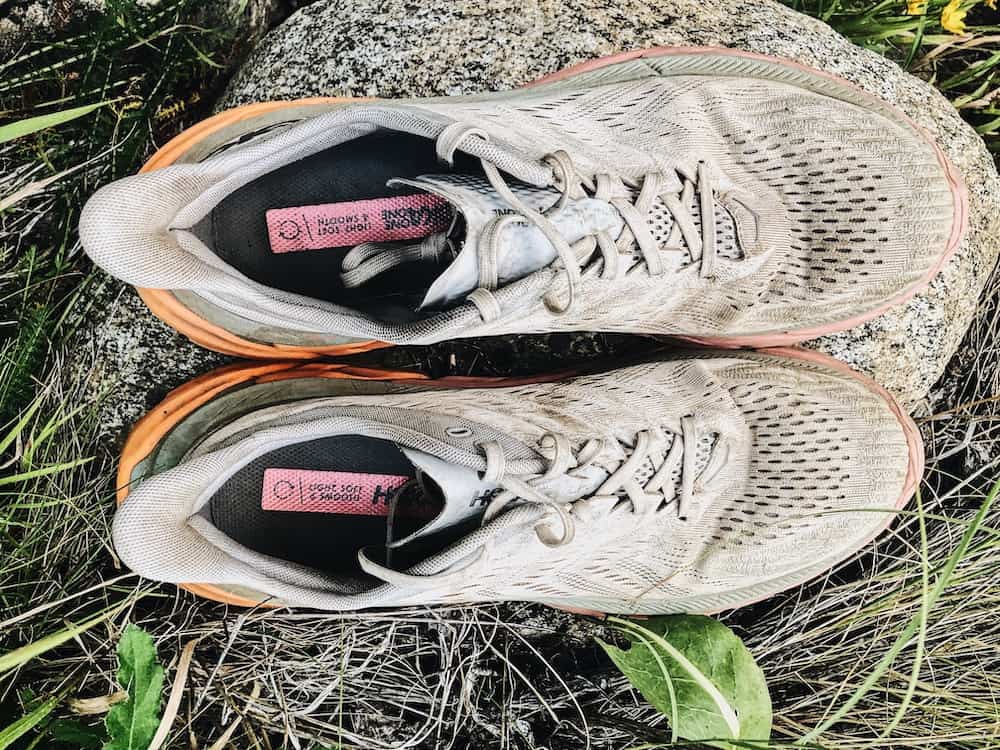
Hoka Clifton Edge Upper
I’ve been happy with the upper of this shoe. I have a narrow foot so typically I have to synch the laces very tight. There is no inordinate bunching of fabric pressing into my foot when I pull the laces tight.
There’s a nice form-fitted feel. It’s a very breathable dual-layered mesh that is soft yet durable. No tears or blow-outs to speak of (but again, I have a narrow foot and I know these are more common for wide feet).
I like that the tongue is attached to the sole by two elastic straps and is minimal, just enough cushioning in it to keep me from feeling the laces on my foot. Hoka knows how to get rid of weight while maintaining comfort.
My one complaint for the upper is that I can feel the edge of the heelcup press into the bottom of my ankle bone on the lateral side of my right foot. I’ve had a handful of shoes do this over the years, some are unbearable and some are just a slight annoyance. This shoe falls in the latter. I typically only notice it for the first few strides of the run and then when I’m leaning into a trail bending to the right. So if you have a prominent lateral ankle bone protrusion that is closer to the bottom of your foot, you might want to try these on in-store before picking up a pair.
The other pretty unique aspect of this shoe is the elongated pull tab on the heel. It reminds me of some sort of elf slipper. It is of no structural support value but it is nice to use when pulling the shoe on and I can’t help but like the more aerodynamic look of the whole shoe package. It pairs nicely with the extended heel.
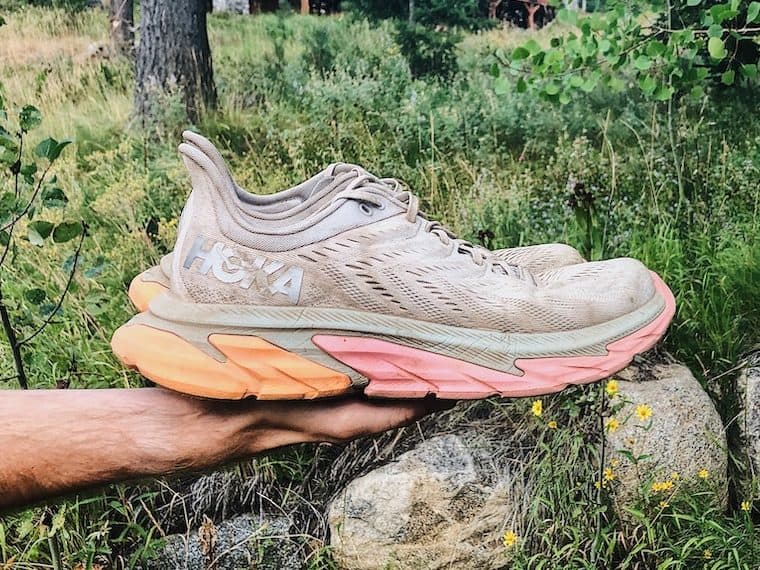
Hoka Clifton Edge Overall Impressions and Take-Aways
This has to be my first shoe with any pink on it. Throw in the orange and white and you have a nice summertime sorbet color scheme. I’ve been reaching for this shoe a lot recently for the comfort value. Apart from that slight heel cup pressure on the ankle bone, it’s a pretty dreamy ride.
For me, the best indicator of a good shoe is one that you take out on a run and you don’t end up thinking about it at all. It becomes part of your body, so seamless that you don’t even notice it on your foot.
I like how Hoka continues to innovate and improve. The Clifton Edge is an obvious evolution of the TenNine, which I reviewed here. I don’t know the sales numbers on the TenNines but my guess is that they weren’t flying off the shelves. It was simply too niche to justify the pricetag. What they did though was morph and tone down the innovations of that shoe and brought them into the Clifton Edge in a more palatable way. The wide-platform, extension off the heel, and the pull-tab aero design were all put to good use. Hoka took a concept shoe, dialed it back, and found a winner.
If you want an innovative, versatile, light-weight, well-cushioned shoe that will last, head to your local running shop to check them out!
Please comment below! What did I miss? What have you liked/disliked about the Edge?
Find this helpful? Consider signing up for our free weekly Rise & Grind Newsletter to stay in the loop! You can also support us via Patreon by chipping in as little as $2 a month. We appreciate your support!


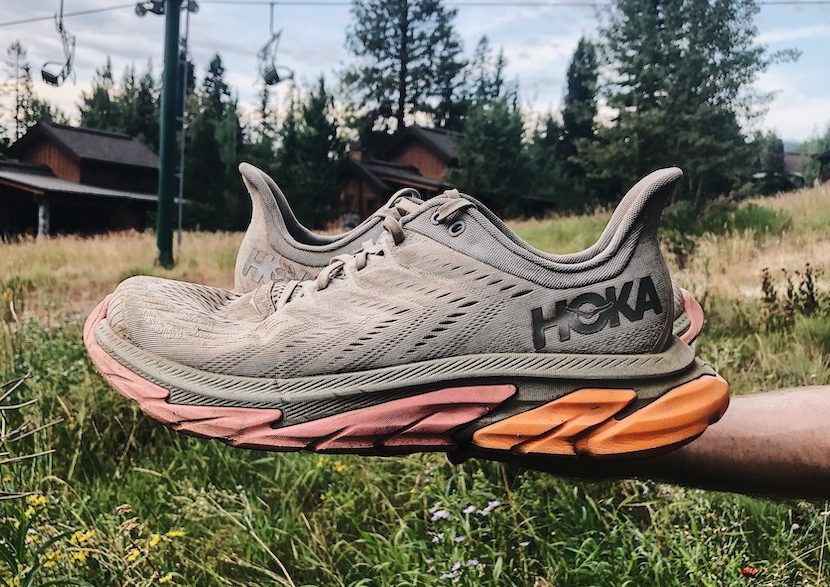
Hi Chase!
I am commenting for the first time here and I am not a trail runner. I am just a simple treadmill runner right now. I run in the Vaporflys and I have the foam all over the place right now. The show has disintegrated but crazy me wears this shoe not only for running but for everything. Things I love about my Vaporfly 4%: the neon orange color, the fact that it has no tongue at all, it feels like a mini trampoline and I think I am faster in it. I used to run in Asics Kayano shoes. I think I don’t bounce at all in those. I like your review of the Hokas but the only pair I bought fit so badly that I had to send it back. My foot is super narrow.